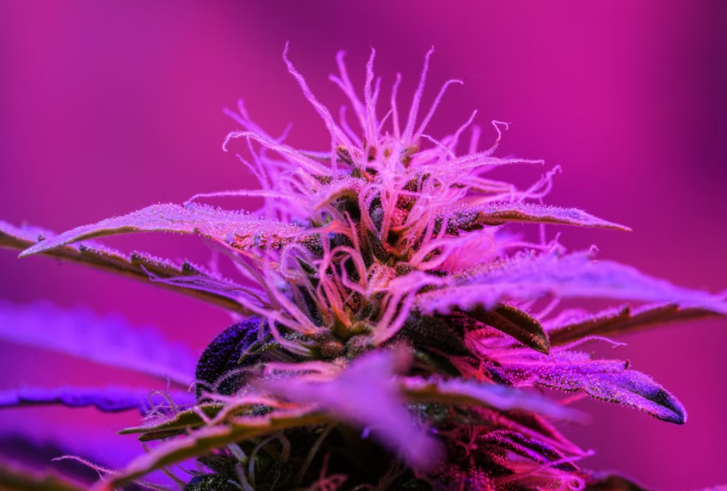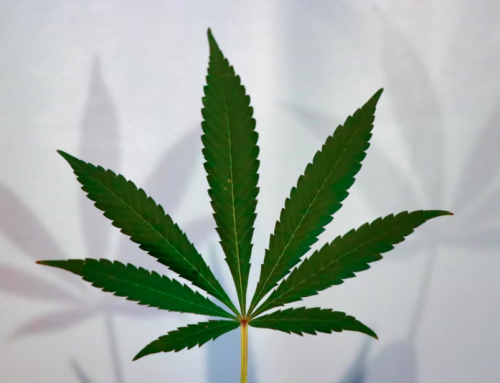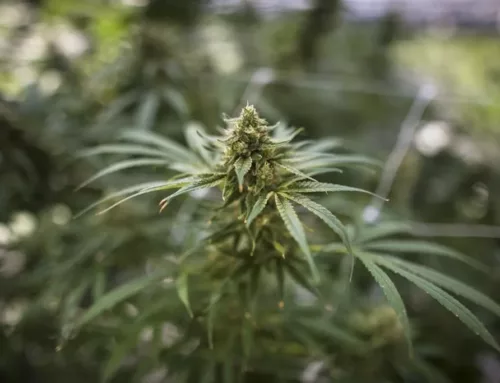With 28% CAGR, Legal Cannabis Market Size to Hit $97 Billion by 2026
NEW YORK- According to Facts and Factors has published a new research report titled “Legal Marijuana Market by Product Type (Buds/marijuana Flower, Cannabis Extracts, Oil, Tinctures) & Others, Species (Cannabis Indica, Cannabis Sativa, Cannabis Hybrid), Strains (THC, CBD, Balanced THC and CBD), Purchase Channel (Online, Offline), Application (Medical, Recreational, Cosmetics) & Others, End-Use Industries (Pharmaceutical, Food, Beverages, and Tobacco, Personal Care, Research and Development Centers), and Geography – Global & Regional Industry Perspectives, Comprehensive Industry Analysis, and Forecast 2020 – 2026” in its research database.
“According to the latest research study, the demand of global Legal Marijuana Market size & share in terms of revenue was valued at USD 22 billion in 2020 and it is expected to surpass around USD 97 billion mark by 2026, growing at a compound annual growth rate (CAGR) of approximately 28% during the forecast period 2021 to 2026.”
What is Legal Marijuana? How big is the Legal Marijuana Industry?
Market Overview:
Marijuana is produced from the dried flowers and leaves of the cannabis plant, which are also referred to variously as hemp, weed, dope, or cannabis. Marijuana contains both psychoactive compounds like Tetrahydrocannabinol, also known as THC, and non-psychoactive active compounds like cannabidiol (CBD). Tetrahydrocannabinol (THC) is the compound responsible for the mind-altering effects of marijuana (CBD). One of the drugs that are abused the most frequently all over the world is marijuana. Marijuana is obtained from the hemp plant, and the “drug” is most frequently produced in the flowers (also known as “buds”) of the plant. The seeds, leaves, and stems of the plant contribute only a very small amount to the final product.
Marijuana is a product that is sold and consists of a combination of dried hemp plant leaves, stems, flowers, and seeds. In most cases, it is green, brown, or grey in hue. A psychoactive substance is anything that can produce an altered state of consciousness, such as alcohol, cocaine, or ecstasy. Marijuana, like these other types of medications, is known to have the potential to cause adverse side effects.
Market Dynamics:
The demand for legalized marijuana is rapidly increasing, especially in countries where marijuana for medicinal purposes and for food & beverages is legal. CBD isolates will see even more development in the coming years thanks to a recent novel food ruling in Europe. Furthermore, children who consume cannabis are only prescribed oil because it has proven to be effective in the treatment of conditions such as epilepsy. Owing to shifts in government policy, the market for legal marijuana is expected to skyrocket. Several new cannabis start-ups are pursuing R&D, research, and manufacturing. The privatization of cannabis retail stores is anticipated in several provinces.
Several provinces that previously selected a single supplier are now encouraging several suppliers to submit bids. Over the forecast period, these factors are expected to drive the market. The increasing legalization of cannabis in several countries is a major factor driving market development. Marijuana’s efficacy for medicinal purposes is gaining traction around the world as a result of recent legalizations in several countries. Medicinal hemp is used to treat chronic diseases like cancer, arthropathy, and neurological conditions like depression, panic attacks, Alzheimer’s disease, and Parkinson’s disease. The high prevalence of cancer is expected to be a critical factor driving the need for marijuana legalization.
However, the various contradictory conclusions about smoking cannabis, such as mucus composition, persistent cough, and respiratory infections like COPD, will serve as a market restriction. The wide legalization of marijuana in this manner will have a variety of consequences for the economy and culture of the countries where it is legalized. Legalization requires policymakers to apply application-based regulations to marijuana production and distribution, meaning that it contributes to the country’s GDP. Legalization also aids in the eradication of gangs and black-market traffickers, as well as the reduction of related crime rates.
Legal Marijuana Market: COVID-19 Impact Analysis
The World Health Organization has designated the year 2019 as the “Year of Healthcare Emergence.” In an effort to stop the spread of the coronavirus, the government of the United States declared it a pandemic, and many other countries instituted travel restrictions and prohibitions on airlines. Marijuana may be helpful in mitigating the mild side effects of covid-19. As a consequence of this, there has been a significant increase in the market for marijuana, which is frequently utilized in medical applications. This is because of the epidemic in research and development efforts.
The rapid increase in significant research and development operations to better understand the application spectrum of legalized marijuana primarily used for medicinal purposes should bode well for market expansion in the next few years. Not only for the treatment of COVID-19, but also for a variety of other conditions. It is possible that during the next few years, a greater number of countries may pass legislation to decriminalize marijuana, which will result in an expansion of the field of medicine in which it can be used therapeutically. The use of these materials in the production of a vaccine to treat Covid-19 has yielded encouraging results thus far. It is anticipated that market shares would return to normal levels by the year 2020. According to the World Health Organization (WHO), over eighty percent of people around the world consume some kind of marijuana or cannabis for therapeutic reasons. As a direct consequence of this, the rising levels of tolerance for cannabis as well as its cultivation and production in developing nations are helping to propel the growth of the medical cannabis market.
Legal Marijuana Market: Segmentation Analysis
The legal marijuana market is segmented based on product type, species, strain, purchase channel, application, and end-user.
As per product type segmentation, the market is divided into Buds/marijuana flower, cannabis extracts (oil, tinctures), others. Based on species type segmentation, the market is classified into Cannabis Indica, Cannabis Sativa, and Cannabis Hybrid. Based on strain type segmentation, the market is classified into THC-dominant, CBD-dominant, Balanced THC, and CBD. Based on purchase channel segmentation, the market is classified into online, offline. In terms of application, the market is split into Medical (Chronic Pain, Mental Disorders, Cancer), Recreational, Cosmetics & Others. As per the end-user type, the market is bifurcated into pharmaceutical, food, beverages, and Tobacco, personal care, research, and development centers. The use of medical marijuana is critical for a variety of reasons.
Medical marijuana is provided to patients with chronic illnesses including Parkinson’s, cancer, Alzheimer’s, and a variety of neurological disorders. The demand for cannabis oil is rapidly increasing, especially in countries where medical marijuana is legal. CBD isolates will see even more development in the coming years thanks to a recent novel food ruling in Europe. Furthermore, children who consume cannabis are only prescribed oil because it has proven to be effective in the treatment of conditions such as epilepsy. The adoption of new and advanced technologies, which has made them more multifunctional, has provided the industry with many lucrative growth opportunities in the coming years.
The global Legal Marijuana market is segmented as follows:
By Product Type
- Buds/Marijuana Flower
- Cannabis Extracts
- Oil
- Tinctures
- Others
By Species
- Cannabis Indica
- Cannabis Sativa
- Cannabis Hybrid
By Strain
- THC-dominant
- CBD-dominant
- Balanced THC and CBD
By Purchase Channel
- Online
- Offline
By Application
- Medical
- Chronic Pain
- Mental Disorders
- Cancer
- Recreational
- Cosmetics
- Others
By End-User:
- Pharmaceutical
- Food, Beverages, and Tobacco
- Personal Care
- Research and Development Centers
Competitive Landscape:
Some of the main competitors dominating the global Legal Marijuana market include –
- Canopy Growth Corporation Aphria Inc.
- Aurora marijuana Inc.
- Maricann Group Inc.
- Tilray Inc.
- Cronos Group Inc.
- OrganiGram Holding Inc.
- VIVO marijuana Inc.
- TikunOlam Ltd.
- The Green Organic Dutchman Holdings Ltd.
- Terra Tech Corp.
- Medical Cannabis Inc.
- Stenocare A/S
- Cannabis Science Inc.
- HEXO Corp
Key Insights from Primary Research:
- According to the analysis shared by our research forecaster, the Legal Marijuana market is likely to expand at a CAGR of around 28% during the forecast period (2021-2026).
- In terms of revenue, the Legal Marijuana market size was valued at around US$ 22 billion in 2020 and is projected to reach US$ 97 billion by 2026.
- New developments in technology, such as DNA sequencing and genetic mapping of cannabis, present numerous growth opportunities.
- Medical Marijuana is in high demand, particularly in nations that have legalised its medical use, on the basis of geography.
- North America’s market growth will be 89% during the projection period.
Key questions answered in this report:
- What is the market size and growth rate forecast for Legal Marijuana Market Size?
- What are the main driving factors propelling the Legal Marijuana Market forward?
- What are the leading companies in the Legal Marijuana Industry?
- What segments does the Legal Marijuana Market Size cover?
- How can I receive a free copy of the Legal Marijuana Market sample report and company profiles?
Key Offerings:
- Market Size & Forecast by Revenue | 2021−2026
- Market Dynamics – Leading Trends, Growth Drivers, Restraints, and Investment Opportunities
- Market Segmentation – A detailed analysis by Product Type, Species, Strain, Purchase Channel, Application, End-User, and Region
- Competitive Landscape – Top Key Vendors and Other Prominent Vendors
Regional Analysis:
North America was in charge of the global marijuana business in 2020. During the forecast period, the region will provide many opportunities for market vendors to expand. Over the projection period, legal cannabis market expansion in this area will be fueled by the legalization of cannabis and the growing number of patients who require medical cannabis. During the projection period, North America will account for 89 percent of market growth. The expansion of the target market is likely to be aided by favorable government laws and the launch of newer pharmaceuticals by drug makers. Major businesses’ increased investments in R&D operations, as well as their acquisition operations for company development, are likely to bolster the expansion of the legal marijuana market and meet business in North America.
By Region
- North America
- U.S.
- Canada
- Rest of North America
- Europe
- France
- UK
- Spain
- Germany
- Italy
- Rest of Europe
- Asia Pacific
- China
- Japan
- India
- South Korea
- Rest of Asia Pacific
- The Middle East & Africa
- Saudi Arabia
- South Africa
- Rest of the Middle East & Africa
- Latin America
- Brazil
- Argentina
- Rest of Latin America
(This information is primarily sourced from Facts & Factors. Highly Capitalized has neither approved nor disapproved the contents of this news release. Read our Disclaimer here).




































